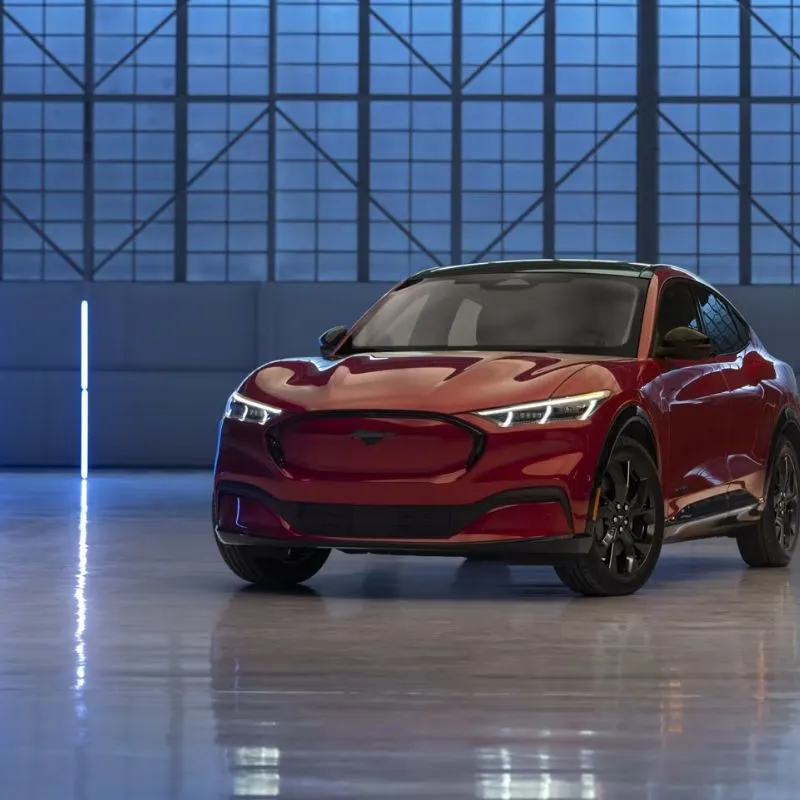Last Updated 2 years ago
This is simply a good year to get an electric vehicle. It looks like almost every week we see carmakers offering new discounts. On top of this, to encourage Americans to choose electric cars, the federal government is making tax credits easier to claim.
In previous years, customers had to wait until the following year and file taxes to see the benefit of the tax credit. But now, starting January 1st, 2024, you can transfer up to $7,500 of this credit to the dealership to lower the purchase price of the vehicle at the time of sale.

However, not all electric vehicles are eligible for the tax credit. The federal government is tightening up the requirements for electric vehicles to be eligible. The reason behind this is to motivate automakers to use more components made in the U.S.
Even all-American automakers are facing challenges in having their EV models eligible for the tax credit. This is the case of the Ford Mustang Mach-E.

In this article, we’ll tell you why the Ford electric Mach-E does not qualify for the $7,500 tax credit. Also, we’ll cover what other incentives you can get instead that are surprisingly even better than this tax credit.
Battery Component Requirements For The Tax Credit
The successor of the most loved American muscle car, the Ford Mustang Mach-E was on the list of best-selling electric vehicles last year. Ford sold more than 39k units of this electric compact crossover SUV in 2023.

Part of this sales volume can be attributed to the fact that last year the Ford Mustang Mach-E was still eligible for a $3,750 tax credit – Only half the $7,500 tax credit.
But you might wonder why only 50% of the tax credit last year and nothing this year? Well, according to some reports, the Ford Mach-E is using LFP (Lithium Iron Phosphate) batteries from CATL, a Chinese battery manufacturing company.
And as established in the Inflation Reduction Act there are two main requirements that the batteries in electric cars have to meet to be eligible for the tax credit:

- Critical mineral requirements: A certain percentage of the minerals contained in the battery has to be extracted or processed in the United States.
- In 2023, the percentage was 40%
- In 2024, the percentage is 50%
- Battery Component Requirements: A certain percentage of the battery components must be either assembled or manufactured in North America.
- In 2023, the percentage was 50%
- In 2024, the percentage is 60%
Meeting each requirement makes an electric vehicle eligible for $3,750. Hence a total of $7,500.
So, in 2023, the Ford Mach-E did meet ONLY the battery component requirement. But in 2024, the required percentage is 50% which makes the Mach E not eligible for any portion of the tax credit.

Although it is unfortunate for customers that models like the Ford Mach E, Nissan Leaf, or the Tesla Cybertruck are not eligible for the tax credit. Overall, this government’s initiative is looking to motivate carmakers to produce more car components in the U.S. which means more manufacturing plants in the country and more jobs for Americans.
Ford Is Cutting Prices In All Trim Levels Of The Mustang Mach E
Ford was aware that the Mach E wouldn’t qualify for the tax incentive this year, thus this past Tuesday the American automaker announced price cuts in all trim levels of the Mach E.

Here are all the updated prices for the 2023 version:
- Select: Starting MSRP $39,895
- Discount Compared to last year’s price: $3,100
- Premium Standard Range: Starting MSRP $42,895
- Discount Compared to last year’s price: $4,100
- Premium Extended Range: Starting MSRP $45,895
- Discount Compared to last year’s price: $8,100
- California Route 1: Starting MSRP $48,895
- Discount Compared to last year’s price: $8,100
- GT: Starting MSRP $52,395
- Discount Compared to last year’s price: $7,600
For the Premium trim Extended Range, the discount is even better higher than the $7,500 tax credit.

On top of these discounts, right now, Ford’s website shows more incentives.
It’s offering 0% APR financing for 72 months and all trim levels and an additional $3,000 bonus on the GT.
Nonetheless, there are some Ford models that are still eligible for the tax credit. For example, the Ford Escape Plug-In Hybrid is eligible for only $3,750. But the 2023 F-150 Lightning is still eligible for the full $7,500 tax credit. We have covered all you need to know about the new Ford F-150 here.
